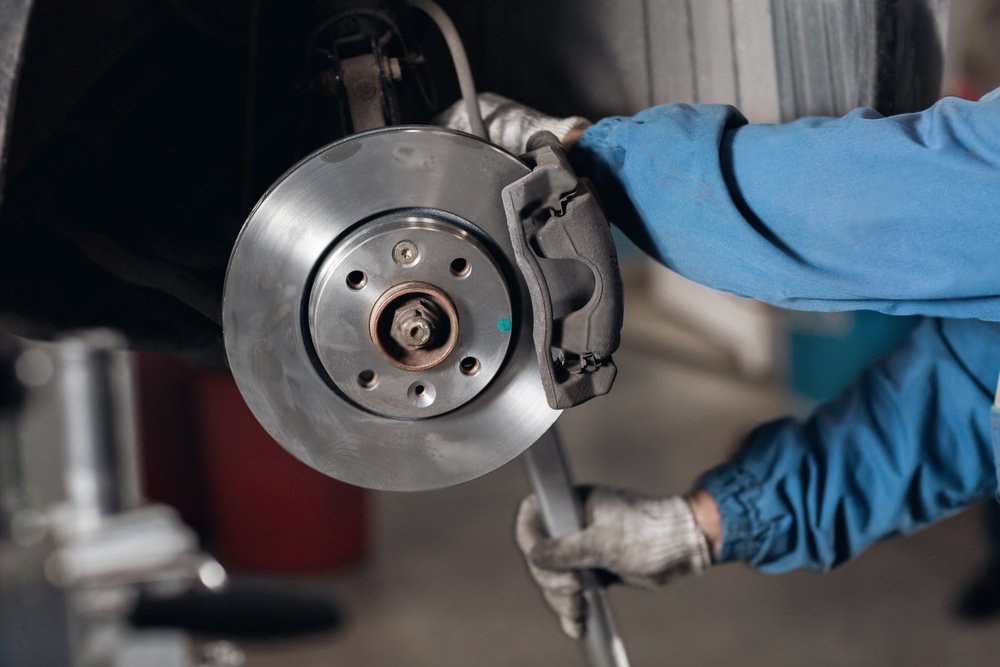Brake Booster Repair and Replacement
Introduction
The brake booster is a critical component of your vehicle’s braking system, responsible for amplifying the force applied to the brake pedal to facilitate smooth and efficient braking. Over time, the brake booster may develop issues that affect its performance, leading to diminished braking effectiveness and potential safety hazards. Repairing or replacing a faulty brake booster is essential to maintain safe braking performance and ensure the safety of you and your passengers.
Why Brake Booster Repair and Replacement Matters?
The brake booster assists the driver in applying the necessary force to engage the brakes effectively. If the brake booster malfunctions or develops leaks, it can compromise the driver’s ability to brake efficiently, increasing the risk of accidents. Common signs of a failing brake booster include a hard brake pedal, increased stopping distance, and a hissing sound when the brake pedal is depressed.

Ensures Safe Braking Performance
Repairing or replacing a faulty brake booster is crucial to ensure that your vehicle can brake safely and effectively in various driving conditions. A properly functioning brake booster provides the driver with the confidence to stop the vehicle promptly when needed.
Prevents Brake Failure
A malfunctioning brake booster can lead to brake failure, making it difficult or impossible to stop the vehicle in an emergency situation. Repairing or replacing the brake booster promptly helps prevent potential accidents and ensures the safety of everyone on the road.

Steps Involved in Brake Booster Repair and Replacement
Repairing or replacing a brake booster is a complex task that requires specialized knowledge and skills. Below are the main steps involved:
1. Diagnose the Issue
Before proceeding with repair or replacement, diagnose the problem to determine whether the brake booster is indeed the cause of the braking issues. This may involve performing a visual inspection, conducting brake tests, and using diagnostic tools to identify any faults.
2. Remove the Old Brake Booster
Once the issue has been diagnosed, remove the old brake booster from the vehicle. This typically involves disconnecting the brake lines, vacuum hoses, and mounting bolts that secure the booster to the firewall.

3. Install the New Brake Booster
Carefully install the new brake booster in place of the old one, ensuring that all connections are secure and properly tightened. Reconnect the brake lines, vacuum hoses, and mounting bolts according to the manufacturer’s specifications.
4. Bleed the Brake System
After installing the new brake booster, bleed the brake system to remove any air bubbles and ensure proper brake fluid circulation. Follow the recommended bleeding procedure outlined in the vehicle’s service manual.
5. Test the Brakes
Once the brake booster installation is complete and the brake system has been bled, test the brakes to ensure that they are functioning correctly. Check for proper pedal feel, responsiveness, and brake performance in various driving conditions.
Benefits of Brake Booster Repair and Replacement
Repairing or replacing a faulty brake booster offers several benefits, including:
Enhanced Safety
A properly functioning brake booster ensures safe and reliable braking performance, reducing the risk of accidents and injuries on the road.
Improved Brake Response
Repairing or replacing a malfunctioning brake booster restores the vehicle’s brake response and pedal feel, providing the driver with better control and confidence while braking.
Long-Term Reliability
A new or repaired brake booster provides long-term reliability and peace of mind, allowing you to drive confidently knowing that your vehicle’s braking system is in optimal condition.
Prevention of Costly Repairs
Addressing brake booster issues promptly helps prevent potential brake system failures and costly repairs down the line, saving you time and money in the long run.
Conclusion
Brake booster repair and replacement are essential maintenance tasks that ensure safe and reliable braking performance in your vehicle. By diagnosing and addressing brake booster issues promptly, you can maintain the safety of yourself, your passengers, and other road users. If you suspect a problem with your brake booster or braking system, consult a qualified mechanic or automotive service professional for diagnosis and repair.



There’s a quiet elegance in the way you express your thoughts, each word chosen with such care and precision.